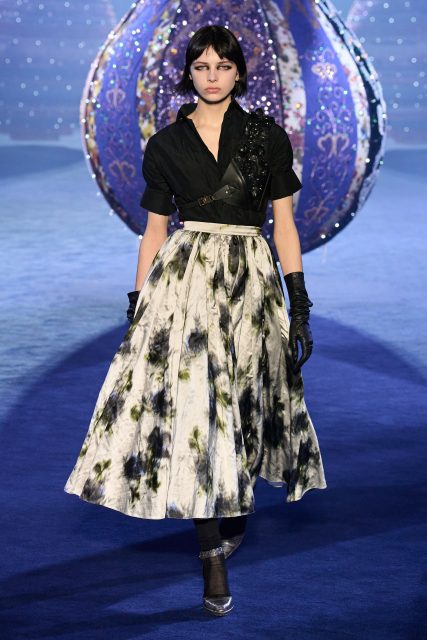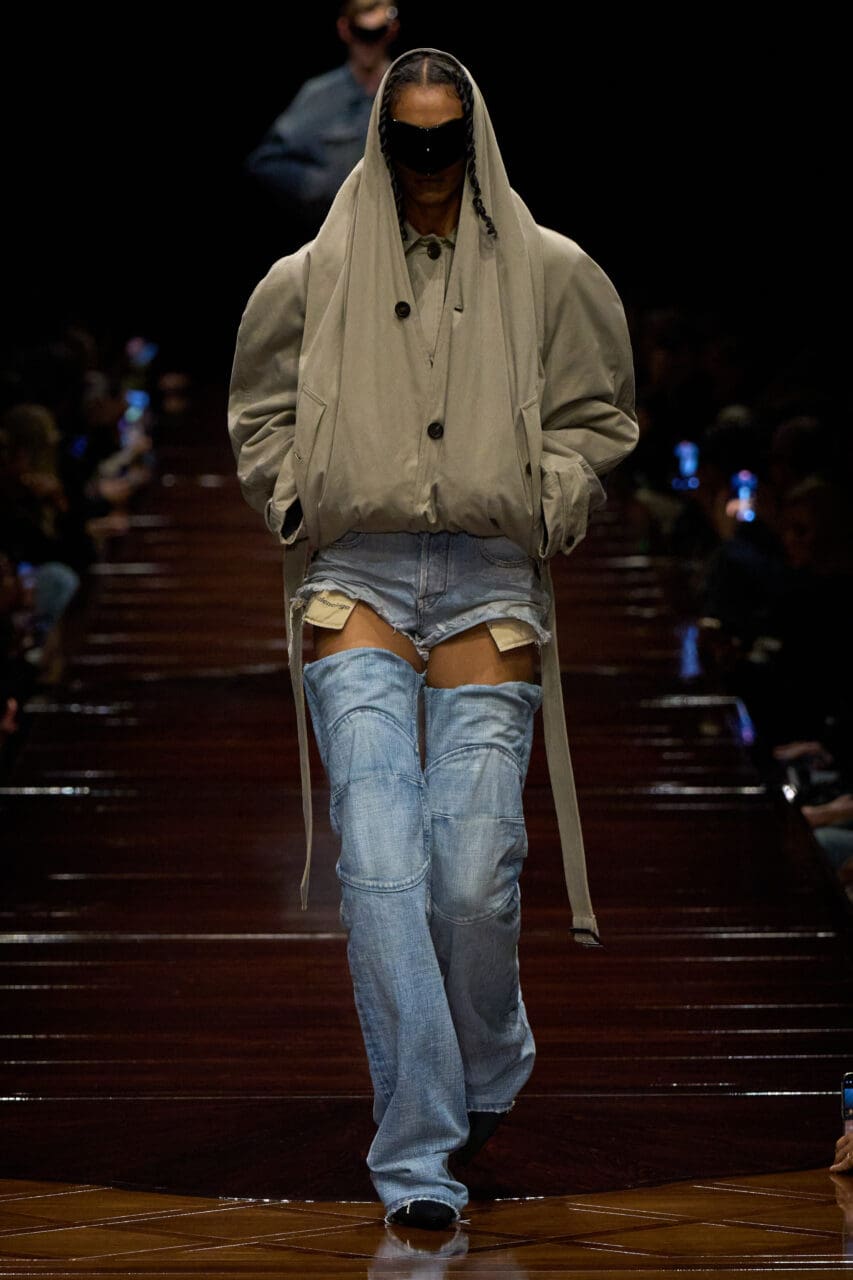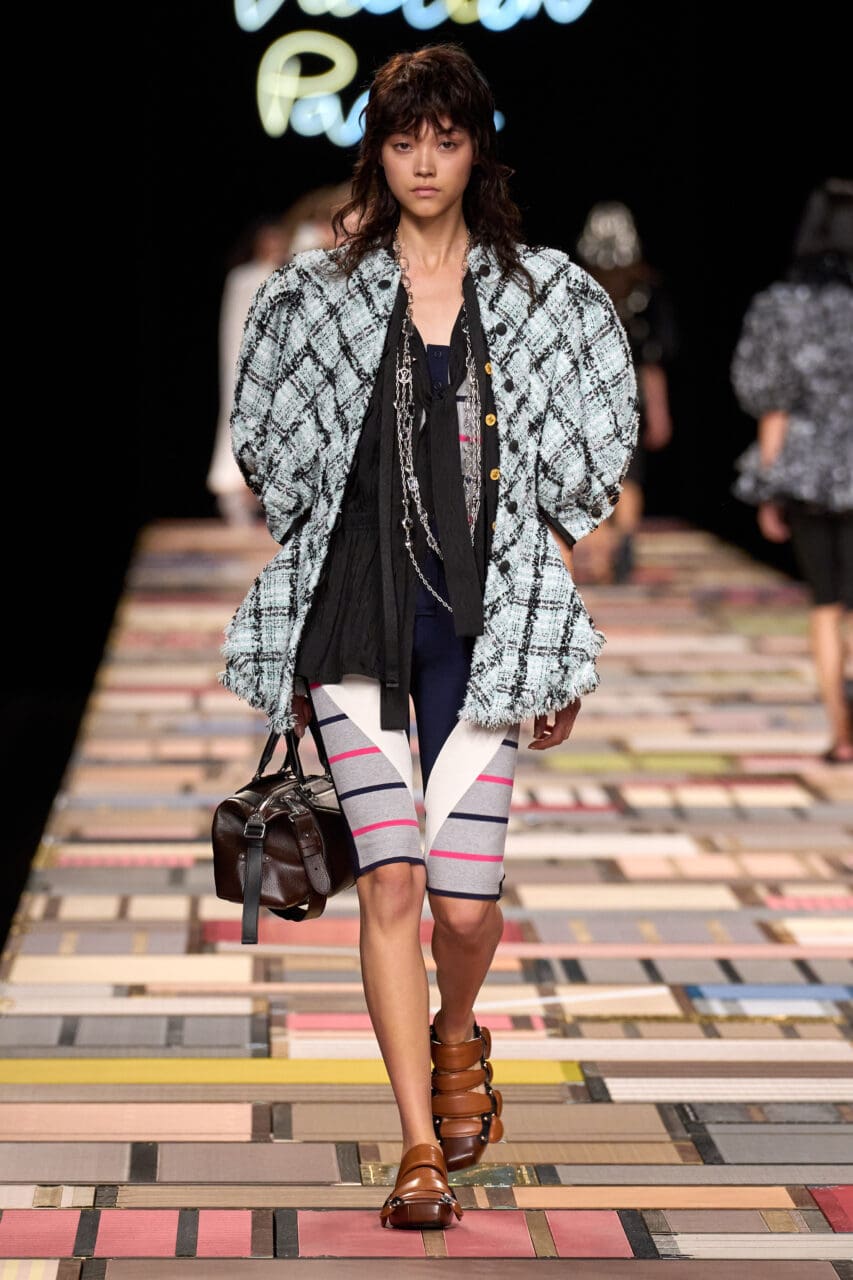Creative director Julien Dossena paid homage to Paco Rabanne in his first show since the eponymous founder’s death last month. From the notes that lined the benches in the Musée d’Art Moderne, to the five original dresses that closed the show, Anders Christian Madsen brings the key takeaways to know from the designer’s autumn/winter 2023 offering.
It was the first show since Paco Rabanne’s death
On every seat on Julien Dossena’s faux fur-covered benches in the Musée d’Art Moderne was a note for Paco Rabanne, who died a month ago, on 3 February. “Thank you for your utopic creative approach that moved the boundaries of reality,” it read. “You were among those who changed our view of the world.” We may not speak about Rabanne as a designer who changed the rules of dressing, but in a fashion and art context, it doesn’t get more influential than his avant-garde approach to clothes. As far as vision goes, his reached so far into the future that it’s yet to be surpassed by time. It was true for a collection – part its own, part tribute – in which Dossena continued to adapt and evolve the ideas of materialisation at the heart of Rabanne’s vision.
It was “full material on the full body”
While Dossena had already finished most of his collection when Rabanne died, what he had been working on was so in the designer’s spirit that it felt like a tribute in itself. “It’s going back to the roots of Paco Rabanne. It was about exploring materials and searching for new possibilities around that. Which is the context of the brand, let’s say.” The idea was “full material on the full body,” Dossena explained before the show, “and how you apply it and how you see the reaction with the body.” They materialised – quite literally – in highly textural, highly tactile head-to-toe outfits like alpaca jeans with a matching top and belt, or those same elements interpreted in lurex wool, or evening jumpsuits with built-in stoles in brushed wool.
It was pretty extreme
Dossena’s proposals are not for the faint of heart. The hyper-textural premise of his work and the silhouettes he applies it to are super overwhelming, especially in the context of a fully carpeted venue with benches covered in faux fur. It’s like stepping into some kind of surreal, psychotic sci-fi universe, a bit like The Cell. In that sense, he manages to project the spirit of Rabanne – whose metal-based designs must have looked insane to the 1960s eye – into a contemporary environment with similar effect. “He invented the kind of designer createur name as we know it today,” Dossena reflected. “The idea that designers could be avant-garde. Along with Courrèges and Cardin, he was the first to do that.”
It included a collaboration with the Dalí Foundation
Rabanne’s connection to the art world was illustrated in his friendship with fellow Spanish avant-gardist Salvador Dalí. “They did performances together. I’ve seen videos from the beginning that I’ve always wanted to work on. It makes sense because they were really best friends,” Dossena said. In collaboration with the Dalí Foundation, he applied five of the artist’s paintings to dresses, “working it as if we slashed the paintings and built the dresses around them,” he explained. Along with dresses constructed around jewellery pieces inspired by Dalí, it made for a meta exercise: avant-garde within avant-garde.
The show closed with five original Paco Rabanne dresses
As the show transitioned into classic Rabanne territory – dresses made of feather-like metal sequins, beads and crystals that rustled up a storm as they moved down the runway – Dossena paid tribute to the late designer by closing with five of his original dresses. They included pieces from his first collection as well as the one worn by Françoise Hardy in 1968 and the one worn by Donyale Luna in the 1967 Richard Avedon shoot. They looked like they could have been made today. While Dossena never met Rabanne, he knew the legend was watching. “I heard from a friend that he was looking at what we were doing, and that he was happy with it. That’s all I needed to know.”
Editor
Anders Christian MadsenCredit
Lead image: Alessandro Lucioni via Gorunway.com










